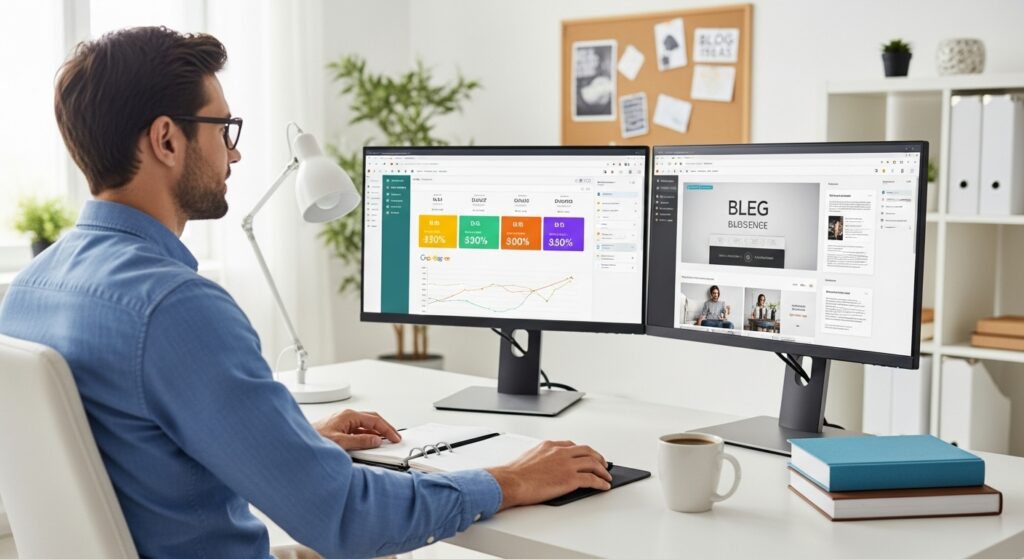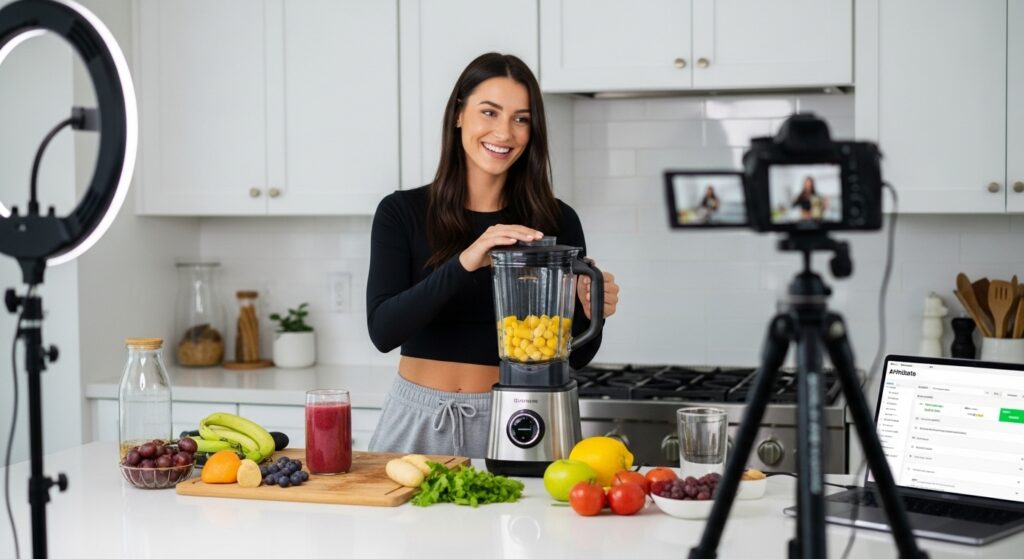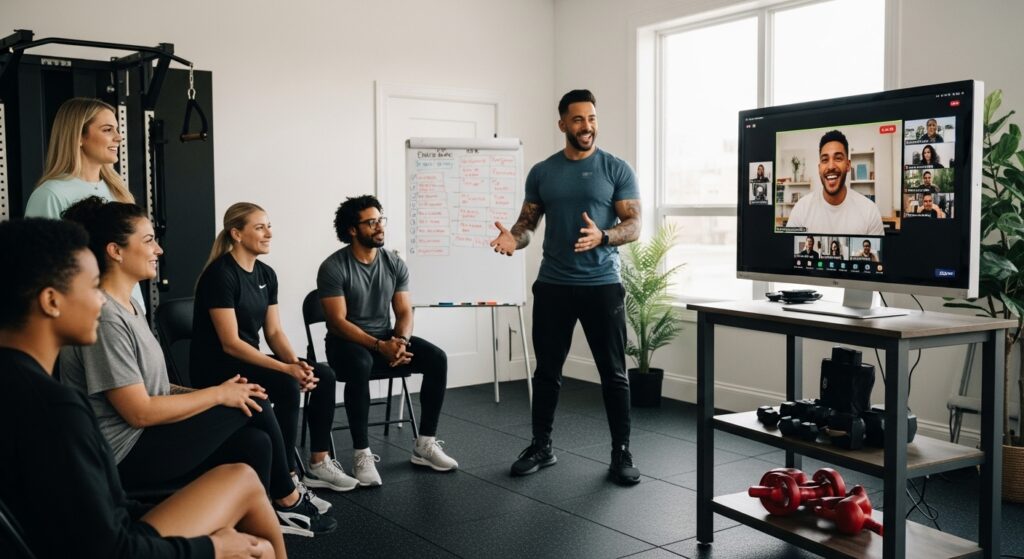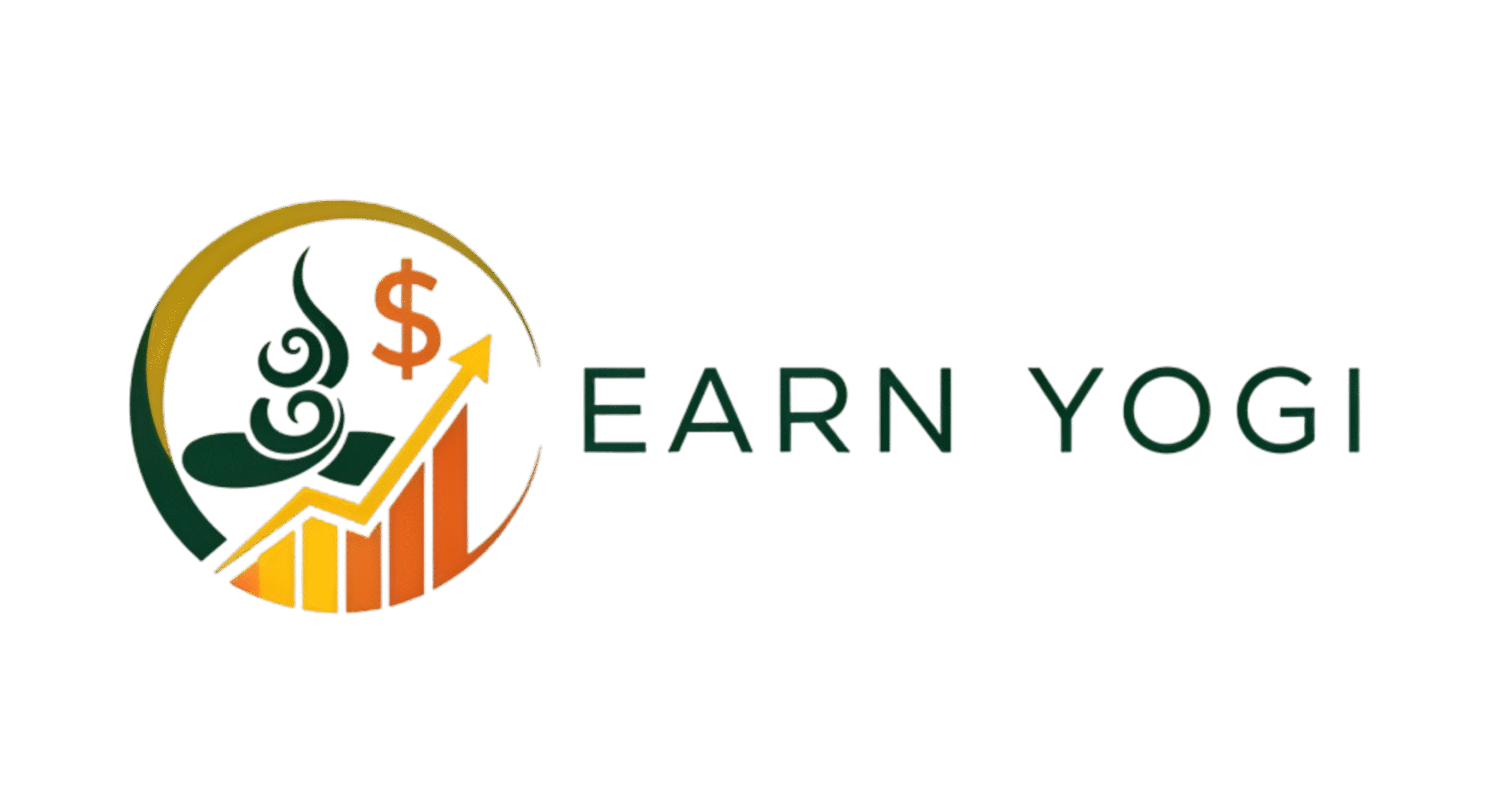Let’s be honest: in today’s world, being “online” is no longer just a pastime—it’s a profession. If you’ve built a blog that gets consistent traffic or have cultivated a loyal Instagram, TikTok, or YouTube following, you’re already sitting on something incredibly valuable. But here’s the question that keeps popping up: How do you turn that digital presence into actual income? Not theoretical “likes” or vague promises, but real, bank-account-changing money?
You’re not alone in asking. Thousands of content producers—be they lifestyle bloggers or meme page managers—are asking the same question. And thankfully, there is no single right answer. There are infinitely many ways to monetize a social presence or a blog, and you know what’s wonderful about it? You don’t need to possess a million followers to get it started. What you need is a customized plan designed for your content, your audience, and yes, your future plans.
Let’s go deep on what it really takes to effectively monetize your online presence. From traditional ads to digital products to brand partnerships to subscriptions and everything in between—no buzzwords here, just clear-eyed and straightforward paths to monetizing in the creator economy.
Must Read – What Are the Most Effective Ways to Earn Money Online in 2025?
1. The Foundation: Knowing Your Value

Let’s discuss the “why” before we go to the how. Why are brands paying you for a post or for an affiliate link? Why will someone purchase your eBook or pay for your exclusive content?
The answer is simple: trust. Whether it’s a blog post reviewing skincare products or a TikTok video on budgeting hacks, what you’re really offering is credibility. Your audience trusts you. They relate to your voice, your perspective, and your expertise. That trust is what makes your audience valuable—and it’s why monetization isn’t about having the biggest following, but the most engaged one.
Assume you own an ecoliving blog. Perhaps you’ve got 8,000 monthly readers, which on paper may not look like much in comparison to virality-fueled influencers. Yet if your readers stick to your every word, treat your advice like gospel, and actually purchase products you suggest? You’ve got gold.
2. Advertising: The Gateway to Monetization
Advertising is where most creators are likely to start—and for a reason. It is simple to implement and incurs no product development or sales to your audience. Bloggers will resort to Google AdSense for your favorite option of placing ads on your site and paying per impression or per click. You can graduate to better-paying premium networks such as Mediavine or AdThrive when your traffic grows.
When it comes to social ads, they are by definition sponsored ads. It could be a sponsored Instagram post, a shoutout on TikTok, or a sponsored video on YouTube. Rates are based on your niche, your follower count, and your engagement rate. Any influencer by luck having 5,000–10,000 followers for a niche niche could charge hundreds per post and others would package dozens of posts or stories as a campaign for thousands of dollars. But here’s the catch—audiences are smart. They can sniff out inauthentic sponsorships from a mile away. The best partnerships are the ones that fit. If you’re a travel vlogger suddenly promoting a VPN, make sure it aligns with your content (e.g., accessing geo-blocked sites while abroad). If it feels off, people tune out—or worse, stop trusting you.
| Platform/Type | Best For | Requirements | Payout Potential | Ease of Setup |
|---|---|---|---|---|
| Google AdSense | Bloggers (beginners) | Basic website, minimal traffic | Low ($0.20-$2 per 1,000 views) | Easy |
| Mediavine | Bloggers (mid-tier) | 50,000 sessions/month | Medium ($10-$30 per 1,000 views) | Moderate |
| AdThrive | Bloggers (established) | 100,000 pageviews/month | High ($15-$50 per 1,000 views) | Moderate |
| Sponsored Social Posts | Social media creators | 5,000+ engaged followers | $100-$1,000+ per post (varies) | Moderate |

3. Affiliate Marketing: Passive Income with a Purpose
Affiliate marketing is one of those buzzwords that gets tossed around a lot—but when done right, it’s a powerhouse for passive income. The concept is simple: you promote a product or service using a unique link. Every time someone clicks that link and makes a purchase, you earn a commission. Sounds easy, right?
Yes and no well.
Affiliate marketing is extremely profitable. Take your article “Top 10 Freelancer Tools” and insert affiliate links for a task manager, budgeting program, and some ergonomic office items. If your article ranks on Google or spreads within an appropriate Reddit thread, you could be earning commissions for months—even years—without doing a single piece of extra work.
Here’s the catch: your audience must think you actually consume and stand by what you’re recommending. Transparency is paramount. Nobody is going to click on an affiliate link in a half-hearted tweet or a post reeking of “this was done to make a buck.” If you’re recommending something, support it with personal experience, frank benefits and drawbacks, and perhaps a tale of how it benefited you personally.
Popular platforms for affiliate programs include Amazon Associates (great for volume, not so great for high commissions), ShareASale, Impact, and niche-specific networks like RewardStyle (for fashion and lifestyle) or CJ Affiliate.
| Platform | Best Niches | Commission Rates | Ease of Use | Notes |
|---|---|---|---|---|
| Amazon Associates | General, e-commerce | 1-10% (varies by category) | Easy | High volume, low commissions |
| ShareASale | Fashion, home, tech | 5-20% | Moderate | Wide variety of merchants |
| Impact | Tech, SaaS, lifestyle | 5-30% | Moderate | Strong tracking, diverse brands |
| RewardStyle | Fashion, beauty | 10-20% | Hard | Exclusive, influencer-focused |
| CJ Affiliate | Travel, finance, tech | 3-50% | Hard | Advanced, suits larger audiences |
Pro tip: Use tools like Pretty Links (for WordPress) to make your affiliate URLs look cleaner and track performance. And always, always disclose your affiliate relationships—it’s not just ethical, it’s legally required.

4. Developing and Selling Products of Your Choice
Now we’re entering business land—serious business land—literally.
Inventing your own product is likely one of the most empowering and profitable things you can do as a content producer or blogger. Why? Because instead of earning a slice of someone else’s pie (as you would with ads or affiliate marketing), you’re making your own pie–and earning all of the slices.
Let’s say your niche is a parenting blog. You could develop an eBook on meal planning for toddlers, a printable bedtime routine chart, or a full-fledged online course on gentle parenting strategies. There are endless products and they are all extremely customizable to your audience’s needs.
Digital products are especially attractive because there’s no inventory, shipping, or overhead. You build it once, and it can keep earning for years. Tools like Gumroad, Teachable, and Podia make it ridiculously easy to launch.

Physical products are a little trickier but can be amazing brand builders themselves. Consider branded t-shirts or mugs or notebooks. Just keep in mind logistics—stock, customer service, fulfillment—unless you set it all up on print-on-demand with services such as Printful or Redbubble.
The key here is value. What problem are you solving for your audience? What can you offer that’s genuinely useful or desirable? Once you’ve nailed that down, the rest is just execution.
5. Subscription Models and Membership Communities
If you’ve constructed a robust, active audience, your most devoted fans may be interested in shelling out for extras of you. That’s where subscription models are involved—think of them like modern fan clubs but with benefits.
Patreon is the old reliable go-to. It enables your fans to sponsor you for a recurring amount per month in exchange for access to behind-the-scenes facts, early access, Q&As, or direct personal contact. Other sites like Buy Me a Coffee and Ko-fi are best suited for single tips or micro-subscriptions.
They could also utilize Substack to provide paid newsletter content on a premium level. If you’re delivering information people can’t access elsewhere—be it investing advice, health regimens, or startup anecdotes—they would probably pay a few dollars a month to listen to you.

Even some creators produce membership sites on their own with WordPress plugins such as MemberPress or sites such as Circle. Those can include member-gated content, communities you can host, and courses or live events.
All of this is about connection. Fans aren’t paying for content—they are paying to feel connected to you and your audience. So be sure to appear regularly, to participate actively and to offer value on a regular basis.
6. Consulting, Coaching, and Freelancing
Here’s a secret that a lot of content creators overlook: your blog or social media account is more than a content platform—it’s a portfolio. If you’ve built a following around a specific skill (like writing, fitness, business strategy, or photography), you can absolutely monetize it through coaching or consulting.
This could involve presenting individual sessions, workshops, or personalized services. Health and fitness influencers could provide online personal training. Personal finance bloggers could provide budgeting advice. Travel bloggers could prepare personalized itineraries for fans.

And if you’re not so keen on direct coaching then think about freelancing. Your blog shows off your writing skills, your design skills, or your video editing talents. Many content creators earn a living by writing for other blogsites, managing other individuals’ social channels, or creating branded content for companies.
The point is to handle your content like a dynamic resume. Don’t hesitate to put a “Work With Me” page on your blog or link to your services within your bio. You never know who’s looking—and who’s possibly waiting to pay for your expertise.
7. Licensing Content and UGC (User-Generated Content)
Another lesser-known but effective approach: licensing your content. If you’ve made a viral video, a beautiful photograph, or a really well-written blog post, you can license it to brands or media outlets.
Platforms such as Jellysmack, Newsflare, and ViralHog assist content creators to sell rights to their videos to publishers, news platforms, or even television networks. Likewise, photographers and bloggers can license photos via stock websites such as Shutterstock, Adobe Stock, or through their own websites directly.
Next is the thriving universe of UGC—User-Generated Content. Brands are now hiring creators to create quality content and not to post it. You won’t require millions of followers for this—mere professionalism and creativity will do.
You are basically a freelancer content producer for brands. And for those not liking to create a huge audience for themselves, this is a golden path.

8. Ethics and Transparency: Making Money Without Losing Your Soul
So, here’s the deal—sooner or later, you’ll hit that classic crossroad: Do I cash in, or do I keep it real? Trust me, you’ll feel that itch. The internet is crawling with sketchy promo deals and “influencers” who slowly transform into walking, talking billboards. Not a cute look. But at the end of the day, if people don’t trust you, you’re toast. Like, maybe you’ll score a quick payday, but good luck getting folks to actually care about your next project.
If you’re gonna hype up a product, for the love of memes, actually use it. Or at least make sure you could recommend it to your mom without cringing. Slapping your name on something garbage just for a check? That’s a fast track to nobody taking you seriously ever again. And once your credibility tanks, climbing back up is a nightmare.
And look—transparency isn’t this optional “nice to have.” It’s literally the minimum. Disclose your affiliate links. Don’t hide #ad in a sea of random hashtags. Make it obvious. It’s not just about dodging FTC fines (yeah, even micro-creators aren’t invisible), it’s about not treating your audience like they’re idiots.
Making money ethically doesn’t mean you gotta be some kind of saint turning down every offer. Just don’t say yes to stuff that feels off. Saying “nah” to one sketchy brand today might leave the door open for something legit tomorrow. Forget the quick cash; play the long game. That’s how you stick around.
9. Real-World Case Studies: Three Creators, Three Wins
Alright, enough theory—let’s talk real people. Here’s how three totally different creators turned their thing into actual income, each in their own way.

Laura: The Wellness Blogger Who Leveled Up
Laura kicked off her plant-based blog in 2018. No fancy marketing background, barely 5k Insta followers. Just good recipes and showing up consistently. Her stuff started popping on Pinterest, thanks to some smart SEO moves.
She dipped her toes in with affiliate links for kitchen gear, then dropped a $19 digital cookbook. Her first month? 47 sales. Not exactly “buy a yacht” money, but hey, it was a start. Fast-forward—now she’s making over three grand a month from this meal-planning course she built herself. No viral explosion. No mega-sponsors. Just slow, solid growth.

James: The Fashion Guy Who Built Real Influence
James runs a TikTok channel on men’s style, rocking about 15k followers. He’s not chasing every trend or doing those cringey dances. Instead, he answers DMs, gives real advice, and shouts out indie designers. That authenticity? Brands notice.
Now he’s teaming up with sustainable labels, keeping creative control. Some posts snag him $500–$1,200 a pop. He adds affiliate sales on top, so yeah—he’s earning, but never selling out his vibe.

Amina: The Productivity Nerd With a Consulting Hustle
Amina’s YouTube is all about remote work hacks, Notion setups, and productivity tools. She’s got ad revenue, affiliate links, her own templates—but here’s the kicker: startups hire her for consulting gigs. Her YouTube channel is basically a business card. She’s pulling $5K to $10K a month, part-time. That’s the power of building authority and letting your content do the heavy lifting.
10. The Classic Faceplants: Where Creators Go Wrong
For every creator crushing it, there’s a bunch spinning in circles. Monetizing is exciting, but man, it’s easy to mess up and lose your crowd.
Coming On Too Strong With Monetization
Nobody likes getting hit with nonstop #spon after following you for your real content. Let the money stuff flow naturally from what you’re already doing. Build trust, then invite people to buy in. Otherwise, it just feels desperate.
Trying to Be Everything, Everywhere, All at Once
You see all these income streams—ads, merch, courses, whatever—and think you gotta do them all RIGHT NOW. Nah. That’s a recipe for watered-down content and stress. Get one or two things working before you add more.
Burnout City
The grind is real, and social media never sleeps. But if you’re glued to your phone, posting 24/7, you’ll burn out. Hard. Space out your content. Batch stuff. Take a nap, eat a snack, go outside. Burnout is the real enemy—not “not working hard enough.”
Forgetting to Check the Data
Analytics aren’t sexy, but they matter. You don’t have to become an Excel goblin, but at least peek at which posts hit or miss. Tools like IG Insights or YouTube Studio can help you tweak stuff without turning you into a robot. Trust your gut, but don’t fly blind.
11. Turning a Side Hustle into a Real, Money-Making Thing
Look, the folks who actually pull this off? They don’t just post for fun and hope it’ll go viral. Nah, they treat their content like a legit business. We’re talking planning, investing in themselves, dreaming way bigger than just snagging the next sponsored post.
Here’s what that really looks like in the wild:
Own Your List: Social media? Flaky. Algorithms change, platforms die. But your email list? That’s all you, baby. Build it, use it, nurture those folks—they’re your ride-or-dies.
Diversify or Die (Kidding… Kind of): Don’t put all your eggs in one basket, seriously. Mix it up. Ads, digital products, coaching, whatever. If one stream dries up, you’re not panicking.
Keep Your Brain Buff: Stuff changes fast. Learn new tricks—SEO, video editing, whatever pops up. It pays to stay ahead (and hey, it’s less boring).
Be More Than a Profile Pic: What’s your whole vibe? What do you stand for? Nail that down and suddenly it’s way easier for fans and brands to find—and remember—you.
Go Evergreen Sometimes: Not every post needs to chase the latest TikTok dance trend. Make some stuff that’s useful forever—like killer guides or tutorials. That’s the content that keeps people coming back (and keeps the cash trickling in).
12. Last Words: Your Platform, Your Playground
Turning content into cash isn’t some get-rich-quick thing. It’s messy, it’s creative, it’s a crapload of trial and error. But that’s what makes it awesome—you’re in charge.
Want to sell products, become a full-time writer, or just make enough to work less and live more? Your online thing is the launchpad. Don’t sleep on it.
Got people paying attention to you—even a tiny crowd? Don’t downplay it. You’re not just a “blogger” or a “creator.” You’re building your own little media empire.
And hey, the wildest part? The people you’re hoping to reach… they’re already here.
13. The Road Ahead: Future Trends in Digital Monetization
Let’s be real—online money-making ain’t what it used to be. Banner ads and basic “buy my stuff” links? Kinda dusty now. The whole scene’s getting wild, and honestly, if you’re a creator, it’s never looked better. Platforms are finally getting their act together, making it easier to cash in, not just post for the dopamine hit.
First up: Decentralization and Creator Power Moves
It’s like the middleman is on the endangered species list. Everyone’s building these “creator-first” playgrounds—Substack, Gumroad, Patreon—where you call the shots and keep more of the cash. No more begging some algorithm for crumbs.
Next: Micro-Monetization—Tiny Payments, Big Impact
Not everyone’s forking over hundreds for a masterclass, but toss a $5 tip for a killer post? Happens all the time. Stuff like Buy Me a Coffee, Twitter Tips, YouTube’s “Thanks”—it’s all about stacking those micro-payments. Trust me, that coffee money adds up.
AI-Enhanced Productivity—Robots Are Your Friends (Sometimes)
Here’s the wild part: AI’s not just for tech bros anymore. Tools like ChatGPT, Canva’s AI, Descript—they’re cutting production time in half. Automate the boring stuff, actually create more, and maybe, just maybe, avoid total burnout.
Community Over Chasing Viral Fame
Seriously, forget trying to go viral every week. That’s a mental health nightmare. These days, it’s about building small but mighty communities. A thousand true fans who actually vibe with you? Worth way more than a sea of randoms who scroll past your stuff.
14. Platform Picks: Where to Host, Sell, and Grow
Choosing where to plant your digital flag? Kinda overwhelming, not gonna lie. Here’s a hit list:
Blogging & SEO: WordPress (stack it with plugins like RankMath), Medium (instant eyeballs), Ghost (for the cool indie vibe)
Affiliate Stuff: Amazon Associates (classic), Impact, ShareASale, Skimlinks
Digital Products: Gumroad (easy), Podia, Payhip, Teachable (for courses)
Membership/Community: Patreon (OG), Ko-fi, Circle, Substack (newsletter + subs)
Content Hosting: YouTube (ads), TikTok (brand deals), Instagram (sponsorships, Reels bonuses)
Email: ConvertKit (user-friendly), MailerLite, Beehiiv (new kid, solid features)
| Category | Platform | Purpose | Key Features |
|---|---|---|---|
| Blogging/SEO | WordPress | Customizable blog/website | Plugins (RankMath), full control |
| Blogging/SEO | Medium | Quick audience reach | Built-in audience, pay-per-read model |
| Blogging/SEO | Ghost | Indie blogging, newsletters | Clean design, membership support |
| Affiliate Marketing | Amazon Associates | Product recommendations | Easy setup, broad product range |
| Affiliate Marketing | ShareASale | Niche-specific partnerships | Diverse merchants, reliable payouts |
| Digital Products | Gumroad | Selling eBooks, templates | Simple setup, no monthly fees |
| Digital Products | Teachable | Online courses | Robust course tools, payment integration |
| Membership | Patreon | Fan subscriptions | Tiered rewards, community engagement |
| Membership | Substack | Paid newsletters | Easy monetization, subscriber management |
| Content Hosting | YouTube | Video content, ads | Ad revenue, Super Thanks, memberships |
| Email Marketing | ConvertKit | Audience building | Automation, landing pages, user-friendly |
Pro tip: Don’t try to be everywhere. Pick what fits your style and go from there. You can branch out later.

15. Small vs. Large Audience Strategies
Here’s the truth bomb: You don’t need a stadium-sized following to make real money. You just need to play to your strengths.
Small but Loyal Crew?
Lean into trust. Sell digital goodies, offer coaching, consulting. Build a newsletter, maybe a Discord. Brands will pay more to talk to your super-targeted community than to a faceless horde.
Big, Broad Audience?
You want scale. Go heavier on affiliate deals, ads, user-generated content. Try tiered offers—free stuff to pull folks in, mid-priced products for the masses, premium coaching for the high-rollers. Segment your audience so you’re not shouting into the void.
Bottom line: Engagement > follower count. Every time.
16. Your Personal Monetization Roadmap: No-Nonsense Edition
Alright, let’s get practical. Here’s your roadmap—no fluff:
Step 1: Audit Your Stuff
What’s actually clicking with your fans? What do they bug you about? Write it down.
Step 2: Pick Two Money Paths
One passive (like affiliate links), one active (coaching, maybe a mini-course). Don’t go full octopus—keep it simple.
Step 3: Set Up the Basics
Join affiliate programs, sprinkle links into your best posts. Whip up a basic product or service page. Hook up payments with Gumroad or Stripe.
Step 4: Test & Tweak
Mention your offers in your content—casually, not like a used car ad. Track results (Google Analytics, UTM links—yeah, boring, but useful). Ask your audience what they want. Literally ask. No mind-reading required.
Step 5: Double Down
When something works, do it more. Automate the grindy stuff (emails, scheduling). Outsource the stuff you hate. Life’s too short for admin hell.
| Step | Action | Tools/Platforms | Timeline | Expected Outcome |
|---|---|---|---|---|
| 1. Audit Your Stuff | Identify top-performing content | Google Analytics, IG Insights | 1-2 weeks | Clear picture of audience preferences |
| 2. Pick Two Paths | Choose passive + active streams | Amazon Associates, Gumroad | 1 week | Focused monetization strategy |
| 3. Set Up Basics | Add links, create product page | Stripe, WordPress, Pretty Links | 2-4 weeks | Functional revenue streams |
| 4. Test & Tweak | Promote offers, track results | UTM links, email surveys | 1-2 months | Data on what works/doesn’t |
| 5. Double Down | Scale successful streams | ConvertKit, outsourcing tools | Ongoing | Consistent, growing income |
And that’s it. Go make some digital money. Don’t overthink it.

17. Closing Thoughts: Creators as Entrepreneurs
Alright, let’s get real for a second: turning your blog or Insta feed into cash isn’t just about chasing dollars—it’s about claiming your turf. Your words, your weird little quirks, your audience. That’s your empire, no matter how small. Kinda wild, right?
Honestly, with the old-school job scene flipping upside down and everyone glued to their phones, “content creator” isn’t just some cute side gig anymore—it’s an actual business. Like, you gotta hustle, mess up, learn, and keep at it. No shortcuts, sorry.
Start tiny. Mess around. Don’t be a robot. Post even when you’re tired.
You’ve already got the gadgets and the ideas. People are out there, scrolling, looking for something real. So stop waiting for a “perfect time.” Make your passion pay the rent (or at least your coffee tab). Every post? It counts.
FAQs
Q1: How many followers do I actually need to make money?
Honestly? You don’t need a mini army. Even a couple hundred diehard fans can bring in cash if they’re actually paying attention (and not just lurking). Micro-influencers—yeah, even with less than 10k—are catnip for niche brands hungry for some genuine engagement.
Q2: Fastest way to bank passive income from a blog?
Affiliate links and digital stuff like eBooks or templates. Sure, you gotta hustle upfront, but once it’s out there? You can make money while you’re napping… or binge-watching Netflix. Your call.
Q3: Any platforms that actually pay creators, or is that a myth?
Totally real! YouTube’s got AdSense, TikTok has the Creator Fund, Instagram throws out Reels bonuses, Medium pays writers if people clap enough, and Substack pays for subscribers. So yeah, money is out there if you’re not shy.
Q4: How do I sniff out affiliate programs that fit my vibe?
Start with the big dogs: ShareASale, Impact, CJ Affiliate, Amazon Associates. But also, don’t sleep on your fave apps or brands—sometimes they’ve got sweet programs hidden in the fine print.
Q5: Should I go all-in on one monetization thing or juggle a few?
No need to go full octopus right away. Pick one or two that match your style and what your audience actually wants. Once you’ve got those humming, then you can branch out and not put all your eggs in one basket, you know?
Q6: What’s the rookie mistake everyone makes?
Jumping the gun and trying to sell stuff before anyone even trusts you. Seriously, nothing screams “unsubscribe” like pushing products on day one. Be useful first, sell later. It works.
Q7: Do I really have to tell people when something’s sponsored or an affiliate link?
Yeah, don’t be shady. Not only is it the right thing to do, but the FTC (in the U.S., at least) will come for you if you don’t. Plus, people can sniff out BS a mile away—just be real.
Q8: Do I need a website or nah?
You can totally monetize just on TikTok, Insta, or YouTube these days. But having your own site? Makes you look way more legit and you have more control. So, not a must, but highly recommended if you’re playing the long game.
Q9: How long till I actually see cash?
Totally depends. Some folks score wins in a couple weeks, others grind for months. It’s not just about how many followers you have, but keeping the momentum and being smart with your money moves. Grind now, thank yourself later.




Pretty nice post. I just stumbled upon your blog aand wished to say that I’ve
truly enjoyed browsing your blog posts. After all I will
be subscribing to your feed and I hope you write again soon!
Thank you so much for your kind words! 😊 I’m really glad you enjoyed the posts, and I truly appreciate you taking the time to leave a comment. It means a lot! Looking forward to sharing more content with you soon—stay tuned! 🙌✨